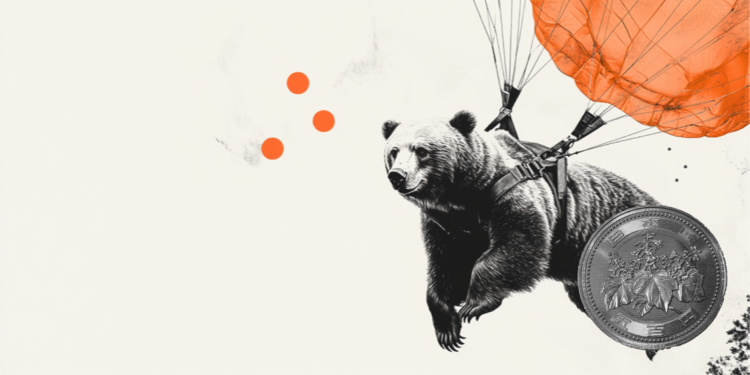After having to reschedule and reschedule their wedding several times due to the pandemic, couples in Brazil are finally able to hold their parties. So much so that there is an expectation of an explosion of weddings in 2022.
“Normally, in Brazil, there are 1.1 million weddings annually and the forecast for this year is that we will reach 1.6 million”, says Ricardo Dias, president of the Brazilian Association of Events, Abrafesta.
The problem is that, with this escalation in demand – and the rise of inflation – the bride and groom are spending up to twice what they planned. It’s marriage inflation.
The couple Nayara Sheng Dall’Agnol and Vinícius Santana Petrone Bezerra, from São Paulo, is watching this inflation happen right before their eyes. The wedding, which began to be planned in March 2020, initially had a budget of R$20,000, to take place in September of this year.
“A maximum of R$25,000, if something unexpected happened”, says Nayara. Even without changing the guest list, the bill is already approaching R$ 40 thousand.
“The party is the same. We didn’t change anything, but the price of decoration went up a lot, buffet, photographer, everything”, says the groom. They say that everything was in order until June of last year.
“It was the beginning of the resumption, the post-vaccination reopening, that prices started to skyrocket”, they say.
The two most expensive items for anyone planning a wedding party are decor, especially flowers, and food and drink. “Usually, 25% of the budget is spent on food and drinks and 35% to 40% on flowers, furniture, invitations, visual identity, canopy or tent”, says Lilian Rocha, wedding planner and owner of Adéquat Eventos.
“We see the frustration in the eyes of the bride and groom when they say that the price of something will have to be readjusted,” she says. And this has been happening all the time, from the end of last year to now, with the dammed demand of the pandemic happening all now.
For Abrafesta, on average, getting married is now 30% more expensive than before the pandemic. That’s why, according to Dias, some buffets are closing their doors, such as Colonial, a traditional São Paulo market, which left more than 100 couples without a party.
“The entrepreneur had no help in the pandemic. He paid off debts with money the client paid in advance for celebrations that were postponed. But now, when it’s time to hold these events, everything is more expensive and he has nowhere to get the money from”, explains the association’s president.
But even with everything more expensive, no one is leaving to party. “The desire to celebrate is even greater now,” says Dias. In this scenario, parties are being modified to fit the budget.
The most common tactic is to cut the guest list. Lilian says many weddings of 100 guests have shrunk to 40. But the quality of the reception has remained the same.
Or even improved, says Mateus Godoy, partner-owner of the restaurant Casa Santo Antonio, in São Paulo, which also hosts wedding parties.
“With fewer people, many couples are serving champagne instead of sparkling wine. In other words, the average ticket, the expenditure per guest, is higher”, he says.
For those who really need to cut costs, a good option is to have a wedding brunch. Instead of a dinner or lunch, “brunch”, which is that hearty breakfast, is gaining popularity as it is approximately 20% cheaper.
“There is also the option of the crepes or pasta buffet. If you add a salad, the price increases”, says the ceremonial Lilian. Another option, according to her, is to opt for places that provide a closed package: place, food and drinks and decoration.
cut and sew
Even the wedding dress is expensive. “I had to make a readjustment of 10% to 15%, but even so I shrank my margins”, says stylist Emannuelle Junqueira, from São Paulo. The problem in this case of dresses is that most of the fabrics are imported and follow the variation of the dollar, which recently returned to around R$ 5.
“There is also still a great shortage of fabrics and even pins. Brazil imports, it does not manufacture here”, she says. The solution, in the case of Emannuelle, was to partner with a national manufacturer to develop new fabrics.
Even so, it is difficult to meet all brides, due to the number of weddings. The designer, who normally makes 120 brides a year, has already delivered 220 dresses by February.
The same goes for the bride and groom. “The fabric for the suits is 30% to 40% more expensive now than before the pandemic,” says Cristofer Mickenhagen, from the men’s suit rental store, Black Tie, in São Paulo.
For pre-pandemic customers, he held back prices. But the new ones are paying 20% more. “There is no way not to pass it on. Even labor is more expensive and scarcer,” he says.
The icing on the cake on this account, however, are the flowers. Some species of cut flowers, which are used at events, rose by 400%, according to florists.
“Remember that growers destroyed flowers in the pandemic? Many of them went to plant other things. Now the flower is missing and the demand is high. The price, as a result, skyrockets”, says Raquel Franzini, owner of the profile Conectação Florista, which connects consumers, florists and producers.
“Until last year, I paid R$5 a pack of Aster, that little flower that people call a mosquito. Now it’s R$25”, says Edilayne Ferraz, florist and event decorator from Campinas (SP). “From February to now, the increase in the price of flowers has been scandalous,” she says.
To get around this skyrocketing value, she no longer agrees with her fiance on the type of flower she will use. Just match the color. Then she researches the types that are at the best prices at the time of the party and makes the decoration in the agreed tone. “If not, it is even unfair to the bride and groom to pass on the price that the producers are asking”, she says.
Source: CNN Brasil
I am Sophia william, author of World Stock Market. I have a degree in journalism from the University of Missouri and I have worked as a reporter for several news websites. I have a passion for writing and informing people about the latest news and events happening in the world. I strive to be accurate and unbiased in my reporting, and I hope to provide readers with valuable information that they can use to make informed decisions.







